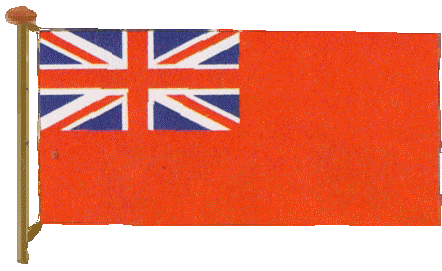



www.ukballadassociation.org










Joker S30 converted into Ballad
In the late sixties and early seventies yacht designs underwent a rapid evolution, the result of numerous experiments. The interest in sailing yachts was immense. These were the days when the predecessor of the Ballad, namely Joker, was designed. Rolf Magnusson the famous/well-
Many considered Joker S30 to be the ultimate racing yacht, it was speedy, modern, spacious and good-
In 1971 Joker experienced a break-
Albin Marin went on to produce 1500 Ballads before filing for bankruptcy in 1982. The moulds were acquired by BODA (Ballad One Design Association) as well as the rights to manufacture and sell. For a few years BODA leased these moulds and the yacht was built to order by a number of Danish wharves until 1987. Approximately 25 yachts were built during this time, all belonging to a series that with 2000. The last set of moulds was scrapped in 1998. (Hatches and rudder can still be manufactured though).
Ballad -
Ballad -
Not only did the Ballad perform well in races; it also turned out to be an excellent family yacht -
Hull and deck
Comes in lots of colours, white being the most popular
The Ballad was built using a number of gel coat colours e.g. yellow, red, blue and white. Amongst the older Ballads blue is the more common colour but several of those were repainted white. After 1976 all Ballads were built using white as the standard colour, unless the buyers specified another colour.
The ballast, consisting of lead, is encapsulated in the GRP (glass reinforced plastic) keel. Moderate encounters with rocks and reefs usually only result in minor damage and this is easily mended. The advantage of this keel design is the fact that there are no bolt joints that could result in leakage. Time has also shown that the keel design is well dimensioned.
The rudder
The Ballad responds nicely to the helm, this is due to a large proportion of the rudder area being located at the bottom. This design provides for an efficient grip even at a large angle of heeling. This is a feature of the Ballad which few other yachts can boast.
Various different manufacturers built the rudders and one should be especially cautious when it comes to hollow rudders. When lifting the yacht ashore in the fall, a small hole should be drilled in the bottom of the rudder which will allow any water to escape, thus preventing frost damage (and the resulting expansion of water when freezing to ice) from causing any damage.
The deck is of a sandwich design, which varies somewhat throughout the years of manufacture. Some older yachts have suffered from delamination problems, poor adhesion between the construction materials. Such problems may alert the owners by a quirking sound when walking on deck. In practice, this problem is of no consequence but is easily remedied by injecting foam Many Ballad owners have mounted winches and line stoppers on the cabin roof in order to make halyards etc. accessible from the cockpit. Advice is available in the Swedish Ballad Club's "Practical Hints".
The Mast
Many Ballads manufactured up until 1978 were equipped with masts from German Ambau and English Proctor, others have masts made by the Swedish company, Selden. The mast stands on the keel (passing through the deck) resulting in a simple and strong standing rigging.
1)General purpose sail metres feet/inches
2)Boom length = 2850 9' 41/4"
3)Pennant for total luff = 11300 37”1"
4)Width = 6732 22' 1"
5)Set flying
6)Luff measurment between thimbles
7)With skirt
Interior layout
The interior design differs somewhat between older and younger boats. All Ballads have the customary design with two berths in the forecabin, locker to port and heads to starboard including a wash basin and (sometimes) a septic tank, also to starboard. The starboard side of the cabin contains a berth, pantry and a wash basin. On the port side there is a berth, navigators table and a quarter berth.
Ballads manufactured in 1979 and later have a cooker with a built in oven. This is, nowadays common in all Ballads (retrofitted by their owners). The pantry is easily redesigned to accommodate an oven.
Some older Ballads are equipped with sea berths above the regular cabin berths. Some of the sea berths are fixed structures making a considerable
difference to the interior layout. For example, there will be six berths rather than the normal five and the navigator has to stand when working at the chart table. Some of these older Ballads have foldable seaberths, which means that they don't differ very much from their younger counterparts. Still, most owners of older Ballads have rebuilt the cabin interiors removing the sea berths. The interior structures are made from mahogany up until 1978, later designs use teak.
The auxiliary
The Ballad was consistently equipped with auxiliaries from Volvo Penta. During the first years, starting in 1971 the MD 6A and MD6B of 10 hp were installed. The difference between these two being the A-
Fresh water-
Sailing a Ballad
The Ballad -
Many Ballad owners consider the Ballad to be a fantastic boat, well adapted to most conditions and definitely safe in harsh conditions. In a tough run in coarse seas she will maintain her course well. A comfortable feature, i.e. when family racing, is the stiffness eliminating the need to reef early. She carries her full set of sail (up to approximately 9 m/s) with ease. Making the Ballad run fast in lighter winds, however, presents more of a challenge.
(c.f. the Swedish Ballad Club's "Practical Hints"unfortunately available in Swedish only).
A Ballad Forum to discuss various aspects of Ballads. Although Swedish based it is in English -
THE ALBIN BALLAD

TOP

TOP


TOP


